I was tired of mowing the lawn every week at my summer house and decided to explore the market for robotic lawnmowers. In advertising and videos on Youtube, there was no answer to three main questions, so I had to study everything “in my own skin”.
There were three things that interested me about robotic lawnmowers:
– Can the robot move over an uneven area with bumps, potholes and holes, or is it just for ideal lawns?
– Is the robot capable of cutting dense wild grass, or is it just for lawns?
– Is it possible to use the robot not every day in automatic mode, but only once a week when visiting the dacha (in our conditions it is dangerous to leave the robot on the street, it will be stolen and even get into the house) , since the owner is so “rich”).
To find the answers to this question, I asked Kuvalda.Ru to give me a lawnmower to test a robot. A week later, I had a huge box with a rather expensive STIHL RMI 422 P robot in my dacha.
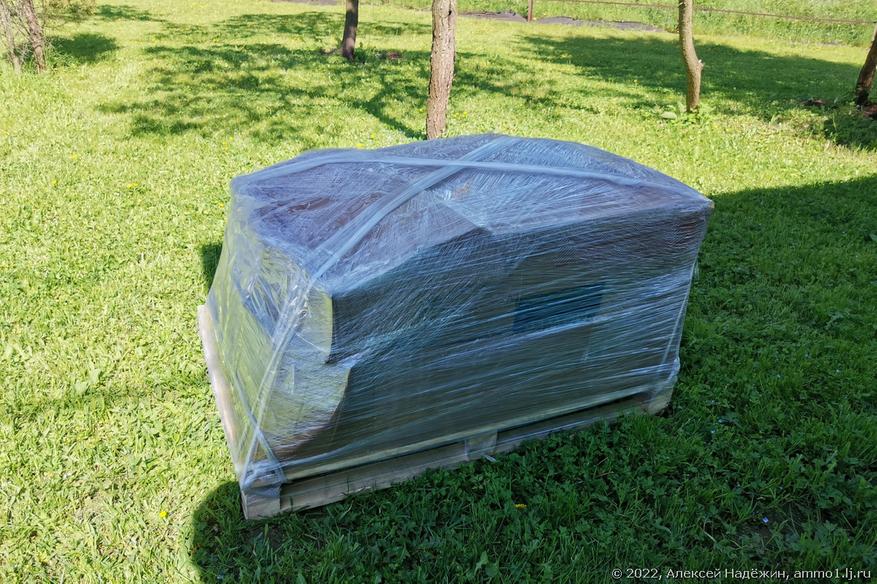
Most robotic lawn mowers cost 35-150 thousand rubles. Almost all of them work on the same principle. A boundary wire is laid on the site (and the pegs for fastening it to the ground are included in the delivery of the robot), with the help of which the territory where the robot works is determined. The beginning and the end of the cable are connected to the base (by the way, until the cable is connected and the base is not connected to the network, the robot refuses to start). Those places within the cutting area where the robot cannot climb (beds, ponds, etc.) are fenced with a wire, moreover, in those places where two pieces of wire meet and go back and forth, the wire passes freely, without feel restricted.
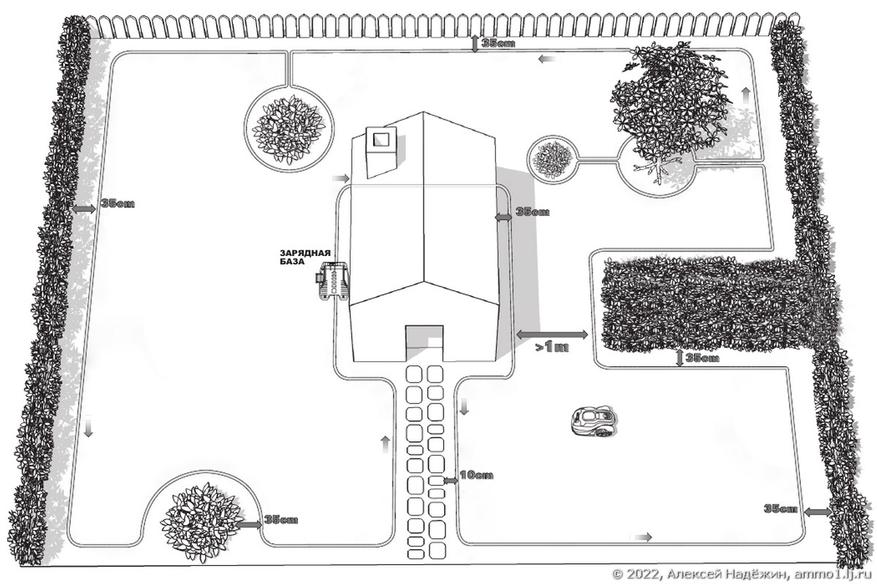
Most robots have only two sensors: a collision sensor (can be a moving bumper or an internal sensor) and a rain sensor. Very expensive robots have an ultrasonic obstacle sensor, for some robots such a sensor is sold as an option.
Almost all robots move randomly: the robot reaches the cable and turns at an arbitrary angle. The sitemap, as far as I know, is built only by Bosch robots, but judging by the reviews, the result of their significant movement is often even worse than the chaotic one of other robots.
Any robotic lawnmower uses a charging base, as long as it can find it (reaches the cable and moves along the cable until it meets the base), charges and continues mowing after charging.
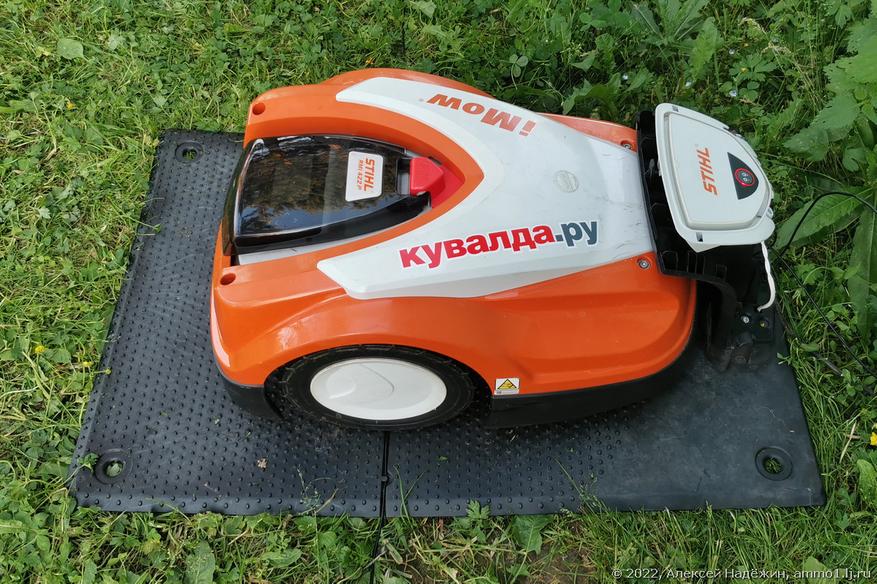
Typically, robotic lawnmowers have two large drive wheels (20-22 cm) and one or two rollers (8-9 cm). Stihl has two rollers.
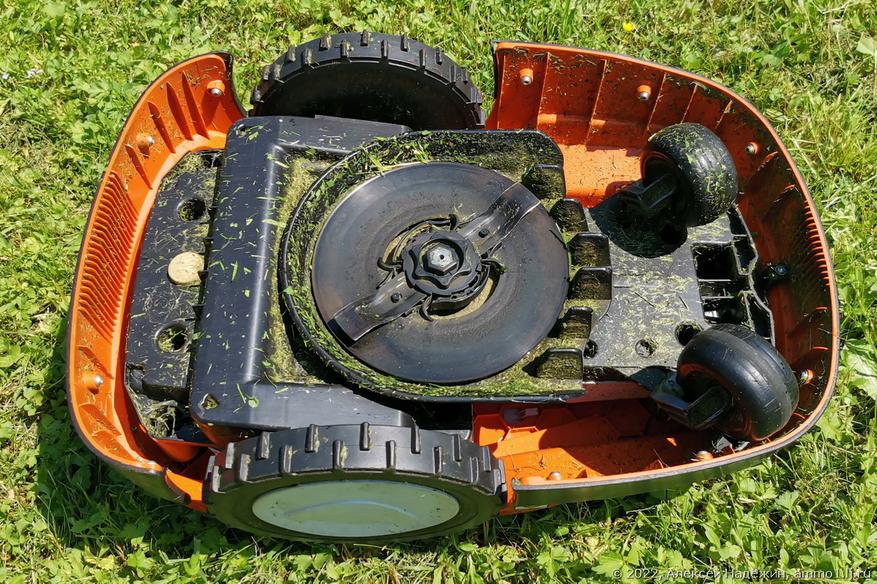
Many manufacturers, to the detriment of patency and quality of cutting, make the robot as safe as possible, so that it cannot injure a child’s hand lying on the grass or cut off a cat’s tail. To do this, the clearance at the front of the robot is reduced to 2.5 cm and the knives are protected to the maximum by means of combs and metal elements. All this leads to the robot getting stuck and the robot getting stuck with grass. I find the situation where a small child lies down on the lawn and a stupid cat sticks its tail in a lawn mower is almost unbelievable. Conventional robots have a clearance of 5 cm, and as soon as the robot encounters something thicker, it immediately turns around.
As you can see, the Stihl has no protection, which is a good thing. In this model, the grass is cut with two metal blades on a disc, the cutting width is 20 cm, in other models, three double-sided interchangeable blades are often made that rotate freely on the disc. In the image, a Worx Landxscape 600 LX790.
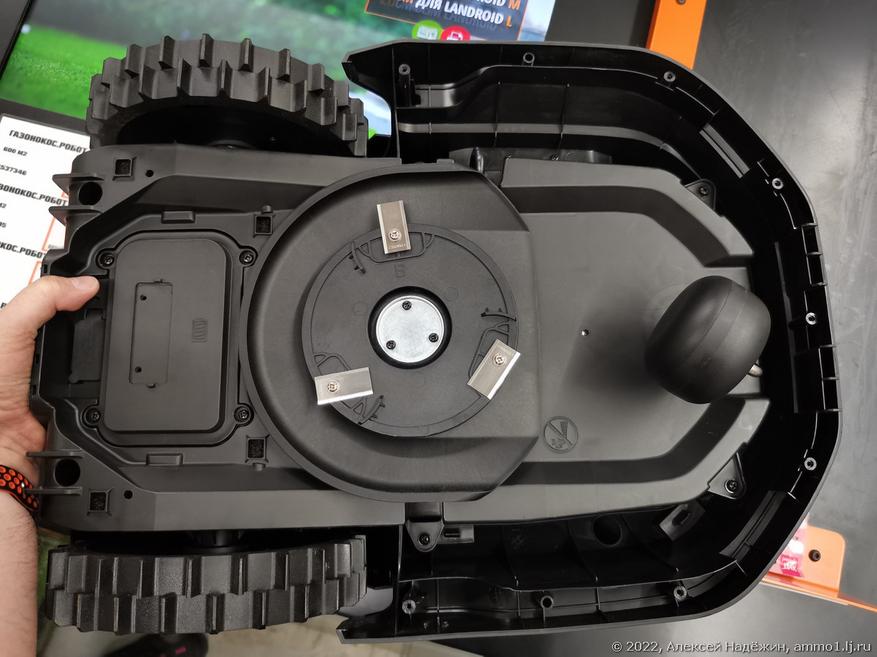
The robot can cut as programmed. In the simplest robots, the schedule is set automatically – the area of the plot is set, based on which the robot calculates how many days a week (from 2 to 5) and how many hours (from 2 to 10) to mow . You can only set the start time. For more advanced robots, the schedule can be set in more detail. Of course, the robot can also be started manually (or until you stop it, or for a set number of hours, depending on the model).
Many robots have a setting for cutting zones: the point of the boundary wire is programmed where the new zone begins. After that, you can start cutting certain zones or a sequence of zones (to find the desired zone, the robot simply moves along the cable for a memorized time, and then starts cutting).
There are robots equipped with Wi-Fi. They are configured and controlled from the application on the smartphone (you can start and stop cutting, send the robot to the base, set the schedule). Perhaps the main advantage of the robot’s Wi-Fi is notifications about work and problems. If the robot gets stuck (and it definitely will), a push notification is sent to the phone.
Let’s go back to the Stihl robot and the answers to my questions.
This robot does not have Wi-Fi, everything is controlled through a large LCD screen. There is a zone configuration, many additional “chips” like looking for a broken cable.
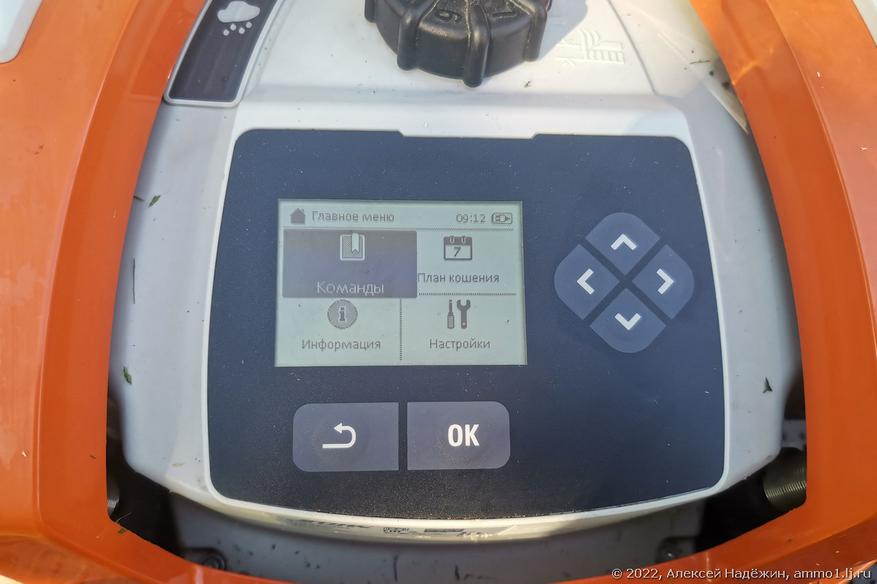
The main impression: the robot “runs like a tank.” He turned out to be completely unconcerned about my bumps, pits, and bumps. The first time he got stuck was when he ran into a hole so that one wheel was hanging over him and the other was hanging in the air. This is where all the stupidity of the robot manifested itself: it just kept turning the wheels and mowing disc, thinking it was mowing. I was surprised that the programmers didn’t think to make it so that if the robot “travels on the wire” for too long, something went wrong. A couple of times, the robot got stuck and found itself in a corner of thick grass – it started to “push” from left to right, but could not pass at all, and then it did not even work going backwards. But, in general, the robot drives through an unprepared area and rarely gets stuck. All places of possible clogging can be corrected.
My second question was about the density of grass that the robot can mow. It cuts dense wild grass “with a bang”, but it is important that the grass is not high, as it can get stuck in it. Usually, the instructions for any robot say that before using it, the grass should be mowed with a conventional lawn mower. Ideal for a robot when it cuts a little at a time, without letting the grass grow. For the lawn itself, this is also good, because the robot does not pick up the grass, but leaves it on the lawn (when the clippings are small, they quickly rot, turning into fertilizer, and the large ones look and rot) . more extensive).
The main question is whether it is realistic to use the robot only once a week, removing it when no one is in the country. Answer: not always. As I wrote above, it is desirable that the lawn before mowing is low (ideally up to 5 cm). In May and early June, the grass grows 10 centimeters in a week. The robot will be able to mow that grass, but sometimes it will inevitably get stuck.
The second point is the mowing time. An unobstructed rectangular lawn, measuring 6.3 x 3.2 m (~0.2 acres), Stihl mowed in 30 minutes, will take about two hours per hundred square meters. Five acres – about 10 hours, and if there are a lot of obstacles, it will most likely be longer.
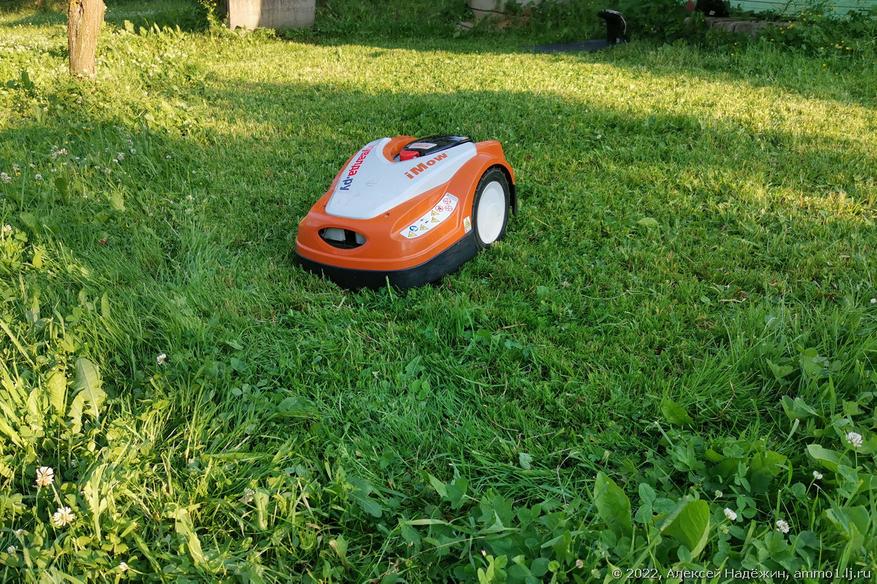
Overall, everything turned out much better than I could have imagined. The robot is capable of mowing not only ideal lawns, but also an ordinary crooked suburban area with wild grass. You will have to play around with the placement of the boundary wire, and probably at some point later you will have to re-position it. It is desirable that the robot works on a schedule and mows the lawn at least once every 2-3 days. You need to be prepared for the fact that any robot sometimes gets stuck. But still, the robot can make sure that the site does not need to be cut manually.
I was tired of mowing the lawn every week at my summer house and decided to explore the market for robotic lawnmowers. In advertising and videos on Youtube, there was no answer to three main questions, so I had to…
Although the Internet has existed for less than a century, several historical periods can be distinguished in its development. After the advent of computers in the 1950s, concepts of global…
One of the main problems of TWS earphones for a long time was the high sound lag, which did not allow comfortable gaming. The situation was aggravated by the fact that smartphone manufacturers are increasingly …
Tottori Prefecture sent me gifts. I am unpacking the bag. She took out the rabbit first. Such figurines are very popular in those parts, and small sculptures can be found in various places in the prefecture…
Samsung, SanDisk, and Kingston are three of the most well-known memory card brands. This article will be a comparative test of three memory cards from the above manufacturers. Memory cards…
DVR in the car is no longer a luxury, but a necessity. Unlike its counterparts, the DVR in the form of an overlay on a regular salon mirror obstructs the motorist’s view less, and when …
Source: IXBT











